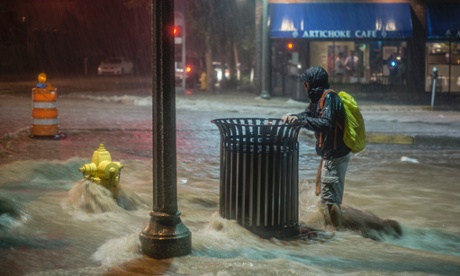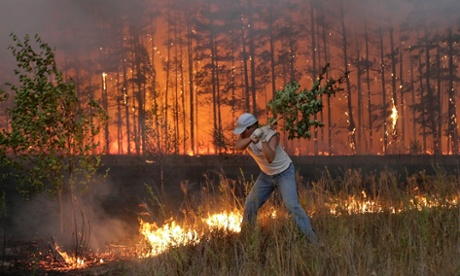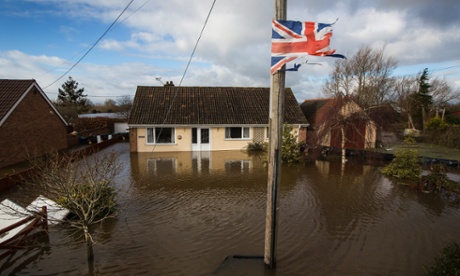by Damian Carrington, The Guardian, August 11, 2014

Extreme weather like the drought currently scorching the western US and the devastating floods in Pakistan in 2010 is becoming much more common, according to new scientific research.
The work shows so-called “blocking patterns,” where hot or wet weather remains stuck over a region for weeks causing heatwaves or floods, have more than doubled in summers over the last decade. The new study may also demonstrate a link between the UK’s recent flood-drenched winter and climate change.
Climate scientists in Germany noticed that since 2000 there have been an “exceptional number of summer weather extremes, some causing massive damage to society.” So they examined the huge meanders in the high-level jet stream winds that dominate the weather at mid-latitudes, by analysing 35 years of wind data amassed from satellites, ships, weather stations and meteorological balloons. They found that blocking patterns, which occur when these meanders slow down, have happened far more frequently.
“Since 2000, we have seen a cluster of these events. When these high-altitude waves become quasi-stationary, then we see more extreme weather at the surface,” said Dr Dim Coumou, at the Potsdam Institute for Climate Impact Research. “It is especially noticeable for heat extremes.” The intense heatwaves in Russia in 2010, which saw 50,000 people die and the wheat harvest hit hard, and in western Europe in 2003, which saw 30,000 deaths, were both the result of blocking patterns. The Intergovernmental Panel on Climate Change concluded in 2011 that extreme weather would become more common as global warming heats the planet, causing both heatwaves and increasingly severe rain storms.

The rise in blocking patterns correlates closely with the extra heating being delivered to the Arctic by climate change, according to the research which is published in the journal Proceedings of the National Academies of Science (PNAS). Coumou and his colleagues argue there are good physical reasons to think there is a causal link, because the jet streams are driven by the difference in temperature between the poles and the equator. As the Arctic is warming more quickly than lower latitudes, that temperature difference is declining, providing less energy for the jet stream and its meanders, which are called Rossby waves.
Prof Ted Shepherd, a climate scientist at the University of Reading, UK, but not involved in the work, said the link between blocking patterns and extreme weather was very well established. He added that the increasing frequency shown in the new work indicated climate change could bring rapid and dramatic changes to weather, on top of a gradual heating of the planet. “Circulation changes can have much more non-linear effects. They may do nothing for a while, then there might be some kind of regime change.”
Shepherd said linking the rise in blocking events to Arctic warming remained “a bit speculative” at this stage, in particular because the difference between temperatures at the poles and equator is most pronounced in winter, not summer. But he noted that the succession of storms that caused England’s wettest winter in 250 years was a “very good example” of blocking patterns causing extreme weather during the coldest season.
“The jet stream was stuck in one position for a long period, so a whole series of storms passed over England,” he said.

Coumou acknowledges his study shows a correlation – not causation – between more frequent summer blocking patterns and Arctic warming. “To show causality, computer modelling studies are needed, but it is questionable how well current climate models can capture these effects,” he said.
Prof Tim Palmer, at the University of Oxford, wrote in a PNAS article in 2013 that understanding changes to blocking patterns may well be the key to understanding changes in extreme weather, and therefore to understanding the worst impacts of climate change on society. But he said climate models might have to run down to scales of 1 km to do so. “Currently, national climate institutes do not have the high-performance computing capability to simulate climate with 20-km resolution, let alone 1 km,” he wrote. “[I] look forward to the day when governments make the same investment in climate prediction as they have made in finding the Higgs boson.”







No comments:
Post a Comment